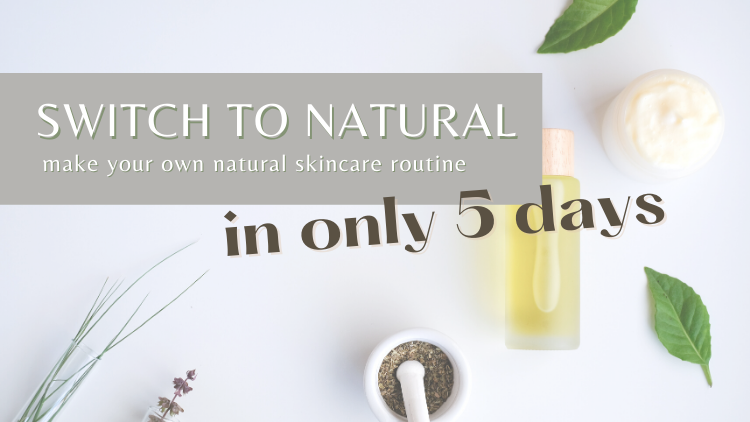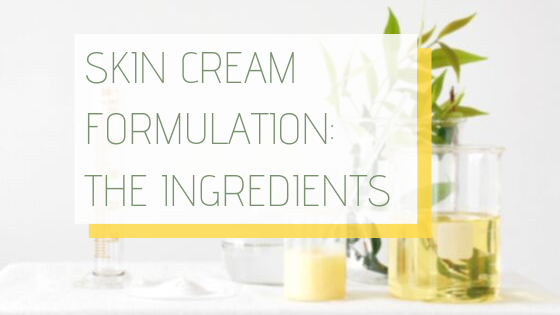Hi. Making skin creams at home is very fun and creative. But how to start? What are the ingredients that cannot be missing for the formulation of skin cream?
In this post I answer these questions, listing the main ingredients that (according to me) you must have. As I wrote in my previous post “Skin cream formulation“, cream is an emulsion composed of two phases, one aqueous and one oily held together by an emulsifier. To this cream are often added further substances called actives with some particular functions (anti-aging, antioxidants, etc..).
Let’s dive into the skin cream formulation by knowing more about the ingredients, classified into 3 groups called phases A, B, and C..
Disclosure: Some of the links in this post are affiliate links. By clicking through them and making a purchase, I may receive a small commission WITHOUT any additional cost to you.
Skin cream formulation: Ingredients Must-have
1- Phase A

Water
Phase A is the aqueous phase. One ingredient that cannot be missing is distilled water. Water is the main ingredient in our preparations. For DIY cosmetics, the use of distilled water is preferable to tap water because it guarantees better safety and hygiene. To personalize your creams, you can use hydrolats to completely or partially replace distilled water.
Some examples are:
- chamomile water for delicate skins (find it here),
- rose water for an anti-aging effect (find it here),
- thyme water for skin that may suffer from acne.
Vegetable Glycerin
Vegetable glycerin is an important compound for cream formulations. It is an odorless and colorless liquid and plays a key role in preparations. Glycerin is a humectant with hygroscopic properties. Its function is to reduce water loss, thus keeping the skin or hair hydrated. Glycerin can be purchased on Amazon or Dragonspice.
Xanthan Gum
Xanthan Gum is a gelling agent derived from sugar. It is used in gel preparations (around 1-2%) or to stabilise emulsions (0.2-0.3%). I think this product is essential in the preparation of a cream because it makes it softer and easy to apply. You can find it on Amazon or Dragonspice.
2- Phase B

Phase B is the oily phase. Here we find butters, oils, waxes, and emulsifiers. For the preparation of a simple cream, I recommend buying a butter, a heavy oil, a medium one and a light one and of course an emulsifier.
Butter
Impossible not to have Shea butter in your collection. In addition to fatty acids, shea butter is a source of vitamins A and E, which are excellent natural antioxidants, and Phytosterols that act as anti-inflammatories. In general, I buy for my formulations refined shea butter because I am not sure if in the unrefined one pathogens or bacteria are absent. You can buy it on Amazon or in Dragonspice (Affiliate links)
Oils
As already described in my previous article, oils are classified according to their viscosity. Some examples are:
- Jojoba (US) and coco-caprylate are considered really light (highly easy to absorb, non-greasy);
- Argan (US), olive, coconuts oil are light,
- babassu (US) and avocado oil (US) are medium,
- castor (US) and linseed oil (US) are heavy (longer absorption time, may result in greasy).
I would recommend the purchase of one oil per category to have a good mix between them.
Emulsifier
The emulsifier is essential in a cream formulation. It is the molecule that keeps together the aqueous and oily phase, keeping the mixture stable over time. There are many emulsifiers but I would recommend the easiest one. Olivem 1000 (INCI: Cetearyl Olivate/Sorbitan Olivate) is a self-emulsifier that doesn’t need a second compound called co-emulsified to create an emulsion. You can find it on Amazon or Dragonspice.
3- Phase C

Phase C is the one that is added after the emulsion has taken place. It consists of several substances that characterize the function of the cream itself such as nutritive, anti-aging, emollient, etc.. In this phase, thermolabile oils can also be added (phase B), to avoid their damage with the temperature, such as rosehip oil and linseed oil. The active ingredients I recommend are definitely.
- aloe vera gel and its 1000 beneficial properties,
- vitamin E or tocopherol as an antioxidant and
- Cosgard as a preservative (it works within pH range: 2-6; poor protection against gram-negative bacteria).
Short break: “Do you want to start making your own beauty products from scratch?” Start now learning how to make an entire lip care routine (scrub, lip mask, and lip balm)!
I designed this short guide to help makers to create their own products at home starting from zero! Knowing why certain ingredients are used is the key to creating perfect and effective products! In this ebook, you will find not only 3 recipes (about lip scrub, lip mask, and lip balm) and instructions but also the basics of understanding why and which ingredients to use. Check it out!
Gabi

Conclusion
These are the ingredients that in my opinion are a must in the formulation of skin cream. These ingredients allow you to start creating a simple and nutritious product. I hope this post has been useful to you and now just have fun with DIY! 🙂
Hey, don’t miss my FREE natural skincare challenge! Grab it now!!

If you like my content, help me with a small donation. With your support, I would like to buy new ingredients and create original healthy beauty products! Thank you :).
Gabi

